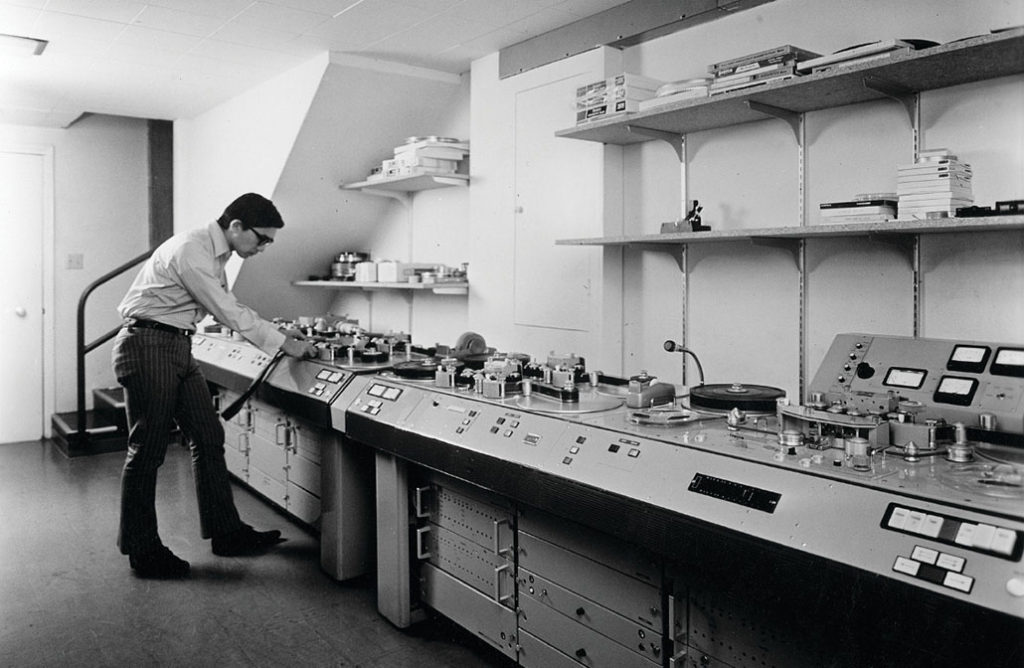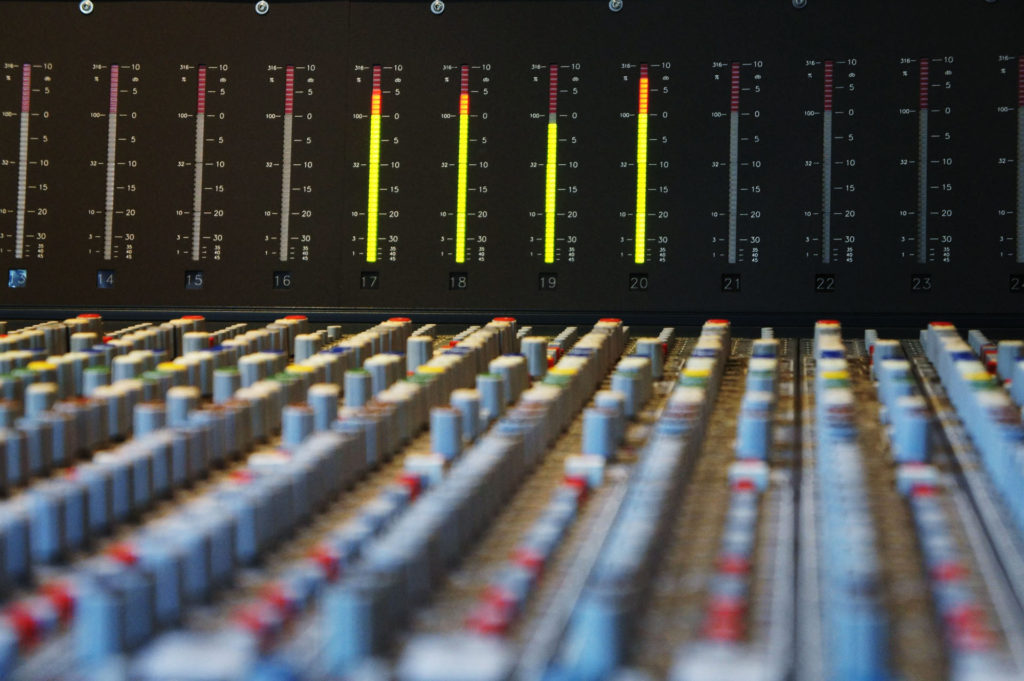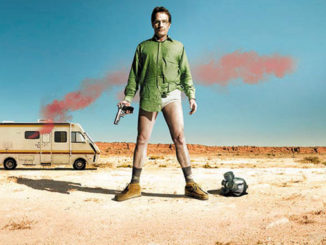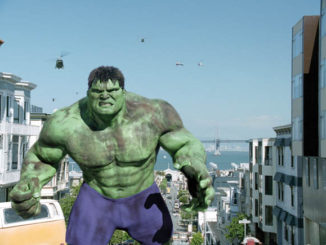
By Gregg Rydloff
If you were to take one of today’s new mixing consoles and place it side by side with one from 25 years ago, they would appear much the same, with faders, knobs, buttons and so fourth scattered across the surface. But the similarities end there. Consoles have evolved dramatically over the last two and a half decades. Directors, picture editors and others who come onto a mixing stage may not see the added complexity, because to the untrained eye, our consoles look very much like the simple automated consoles of a few years ago. But in fact, they are now orders of magnitude more complex and flexible. Like picture and sound editors, mixers have learned to manage machines of imposing power and technical sophistication, and the craft of mixing has been transformed as a result.
What Has Changed?
The console we used 25 years ago had a what-you-see-is-what-you-get functionality: each fader and knob had a single dedicated function hard-wired to a specific location on the console surface. The consoles were analog, and automation was in limited use – while automation systems started appearing on film consoles in the mid-1970s, they weren’t widely used until a decade later. Each fader strip usually had some combination of simple equalizers, filters, aux sends and bus routing. While the newest consoles of the time might have had a three-way panner (L-C-R) on each strip, many had only a few panners shared by the entire board. The larger consoles had around sixty faders. Most of the source material was coming from large magnetic film playback machines (“dubbers” or “dummies”) in the back room.
In contrast, some of today’s new consoles are more like icebergs: 10 percent of their functionality is visible on the surface, while 90 percent is unseen below. They are fully digital (or at least have a digitally controlled surface), fully automated, multi-layered control surfaces filled with multi-use faders and knobs. Depending on the complement of digital engines and digital signal processor (DSP) cards, some of these consoles are capable of supporting over five hundred imputs. Each console manufacturer has devised its own way to handle the spiraling complexity, displaying a manageable subset of the faders in use while keeping hundreds of non-displayed faders working off the surface. The surface layout can be configured to the mixer’s taste and changed at the push of a button or the click of a mouse. Each fader can have customized processing. The patching source material and recorders is electronic and stored with the mixes. Mix automation can be conformed to parallel changes in the picture. The source material now comes from a variety of digital dubbers and workstations, and most tracks can be quickly accessed and modified by editors.
The essence of mixing still lies in a mixer’s intimate connection to the material, to the character of the film. And that connection can be fundamentally altered by the technology around us.
Console Evolution
Advances in technology have always inspired new ways of working, which in turn create a need for even more advanced technology. The evolution of consoles has followed this common cycle, although some technological developments had a greater impact at the console than others. For example, the transition from optical sound tracks to magnetic sound tracks, which took place in the mid-to-late 1950s, caused no real change to console design, because even though the recording medium changed, the number of tracks did not increase. (Everywhere else the impact was greater: machine rooms replaced all their optical equipment with mag machines, sound editors had to make the switch with their equipment, and sound transfer facilities geared up for magnetic recording, which took all of the optical sound reprint work away from film labs.)
While changes in technology have been continuous, the following advances particularly affected both console design and the way mixers work:
- Toward the end of the 1960s, linear faders (sliders) began to replace rotary pots, allowing for more faders with a mixer’s arm span. They also enabled mixers to grab more faders at the same time.
- Prior to about 1970, mixers were unable to back up and punch-record in the middle of a mix, so an entire reel had to be mixed from start to finish in a single pass. This limited the number of tracks that we could physically and mentally accommodate. Once we acquired the ability to punch in, we were able to handle more tracks (which used more faders), so mixes began to expand.
- Noise reduction for recording and playing back sound tracks helped contain the noise floor, which allowed even more tracks to be added to the mix.
- Although there had been early Dolby stereo mixes released on mag-striped prints, the advents of stereo optical release prints (L-t-R-t) during the 1970s made stereo mixing commonplace by the mid-1980s. This required large numbers of faders to play back pre-dubs, because stereo pre-dubs require more channels to allow for panning. Stereo mixes also led to more pre-dubs, in order to keep the various sound elements separate.

Mixing in the Eighties
By 1980, mixes were severely constrained by console limits. The first attempt to deal with the fader crunch was to install pre-dub return boxes on or near the console. These boxes were a primitive way of playing back pre-dubs, and most allowed only simple level control from a sub-master (a single fader that allows you to control the levels of several others).
As mixes continued to expand, these pre-dub boxes proved too limited. Soon additional consoles started showing up on the dubbing stage. These outboard consoles (also referred to as “side cars”) were used to handle the overflow of mix material. Most needed to be fairly small (typically around 24 inputs) so that they could fit somewhere close to the mixers. While satisfying the need for extra faders, these consoles made for awkward mixing. Most were placed to the side or even behind the mixer. Trying to keep a proper stereo image while way off to the side or facing away from the screen is not easy. The constant twisting and turning also led to sore backs and necks.
The next issue facing mixers was how to handle all these faders. Moving fader automation came into play around the mid-1980s and caught on quickly because it was much simpler to use than earlier automation systems. Many consoles were retrofitted with these systems, which remembered and stored all the level changes mixers made with their faders. Some systems even allowed for simple switch automation (cutting the signal to the fader, putting EQ in the circuit, etc.) This helped tremendously, but mixers still needed more. Panning was still manual. It wasn’t unusual to see all the mixers and a couple of editors huddled over a section of the console, trying to pan a mass of car-bys across the street.
Mixing in the 1990s
In the 1990s, the post production process moved into the digital and non-linear realm. Non-destructive picture editing systems allowed filmmakers much more flexibility in their creative choices. Being able to quickly experiment with new cuts and recover old cuts at the push of a button allowed final decision making to be delayed until the last possible moment at the same time, increasingly complex visual effects were taking longer to complete.
A staggering amount of work is being done in a very constricted time frame.
All of this meant that pictures were no longer locked before being turned over to the sound editors to prepare for the dubbing stage. And even though digital audio workstations made it possible for sound editors to make a lot more changes in less time, the only workable strategy for them was to pick an early version of the picture and prepare that for the stage, even though they knew that the director and picture editor had moved on and that massive changes were sure to follow.
The ripple effect this had on the dubbing stage was huge. Mixes were in a constant state of flux. Keeping to schedule was hampered by the need to continually redo work no longer valid due to picture changes. And because the editor and the director were still in the editing room or involved in some other post production process, they no longer came to the stage for pre-dubbing. Choices that used to be made during pre-dubbing were now delayed. This meant that more alternates had to be carried forward to the final mix, along with more separation within pre-dubs, both to preserve choices and to facilitate the changes that everyone knew were on the way.
On the dubbing stage, the magnetic film recorder was probably the final barrier to the proliferation of console faders. As long as you recorded to film, you needed to playback on the magnetic reproducers in the machine room. Each stage had a set number of machines to work with, so no matter how many source tracks you started with or how many pre-dubs you ended up with, there were always a finite number of tracks a mixer could receive at the console. Each mixer knew and worked within these parameters. If there were too many pre-dubs, mixers would combine them into “sub-dubs” or “Super pre-dubs”. If those needed to be unwound later, mixers would re-combine them, or swap some units around on the dummies and hang the original pre-dubs in order to get through the offending area. Once the number of faders available matched the number of source tracks possible, the console was pretty well set. This happy balance was destroyed by digital recorders.
Digital recorders have allowed us to break the physical limits on track depth that mag recorders enforced. Now, an ever-increasing number of compact and portable digital dubbers and workstations can be used to play back hundreds of audio tracks. And as consoles have expanded to accommodate all those new tracks, the number of faders made available to mix the soundtrack has exploded.

Mixing Today
Today’s mixing stage also looks very similar to those of the past, yet it works very differently. What was once linear has gone non-linear – digital picture has arrived on the stage, allowing mixers to access any part of the reel at the push of a button. Instead of making a single pass, today we can mix frame by frame. Digital media management has also become extremely important, because recording, backing up and retrieving information on hard drives and servers is a lot more complex than recording to a roll of film and sticking it on a shelf somewhere. Moreover, the powerful new consoles need more setup time and engineering support to take advantage of their amazing flexibility.
The ability to delay decisions has also brought more of the post production process onto the stage. Choices once made in spotting sessions or played for the director in editing rooms are now first heard at the final mix. Sound and music editors can access their entire library from the workstations they bring with them to the mixing session, even using the Internet to transfer files to and from their editing facility. Another change is that directors expect immediate and total access to everything. In the past, if a director asked for a new sound or a different take, the editor took a unit of the stage into a cutting room, made some transfers, cut the new material and raced back to the stage. Simple changes took half an hour or more, If you were lucky. Most times, the work on stage would continue and the fix would wait until the next time the reel was hung. Today, editors must not only be ready to audition a dozen options for the director, they must be ready to rebuild entire sequences in just a few minutes. Of course this means the mixers need to be able to handle a lot more tracks at a moments notice.
A staggering amount of work is being done in a very constricted time frame. Hundreds of changes are made to hundreds of tracks and no one seems amazed by it. Editors and mixers have learned to anticipate and adapt to the ever-evolving picture. The impossible has become the norm.
Digital recorders have allowed us to break the physical limits on track depth that mag recorders enforced. Now, an ever-increasing number of compact and portable digital dubbers and workstations can be used to play back hundreds of audio tracks.
Yet some thing have not changed. Time and money remain the primary concerns, but as more time is devoted to logistical issues, everyone must scramble to keep the creative process intact. While our experience and modern tools allow us to turn out high-quality, extremely layered mixes, the changing picture edit can affect the aesthetic quality of the mix. When mixers start at the beginning of the film and continue in sequence, we are able to create an almost instinctive rhythm to the mix. Hundreds of mixing decisions are made relative to what has and is going to occur. We constantly make subtle and almost subliminal moves, affecting the transition of one sound to the next. But when scenes get cut, trimmed and rearranged, these nuances become lost or no longer fit the picture. The pacing and dynamic flow of the mix becomes less fluid and smooth. Granted, probably no one will ever be aware of these differences, but it is sad to know you would have mixed differently if you had only been able to start with the finished picture. The essence of mixing still lies in a mixer’s intimate connection to the material, to the character of the film. And that connection can be fundamentally altered by the technology around us.
Mixing Tomorrow
The new breed of “virtual” consoles has allowed the mixing process to keep pace with the increasingly frenetic post production process, but all this technological and logistical complexity can add stress and loss to creative time, ultimately altering the artistic value of the work. And things may only get worse: currently, mix schedules can push up to within a couple of weeks before the release date, leaving enough time for the labs to strike release prints and get them delivered to the theaters; studios start hyperventilating when mixing continues to within nine or ten days of a movie’s release. But even this might change if studios start delivering a digital picture format that can be downloaded by exhibitors. In that case, work could continue right up until the release date – or even beyond, because theater owners could conceivably access updated versions throughout the films entire run. Imagine someday telling your friends what you are working on and having them reply, “Oh, I’ve already seen that!”
The evolutionary process taking place on mixing stages isn’t finished, and it can’t be stopped. We’ll see consoles become more ergonomic and more intuitive. And we’ll see consoles handle changes in more sophisticated ways and interact with editing workstations more effectively. But the old days of what-you-see-is-what-you-get are gone, and they’ll never come back.





